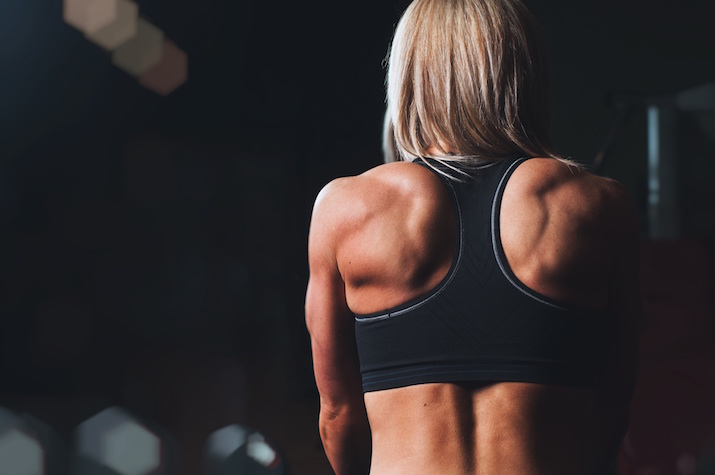How many of you use muscle soreness following a workout as the metric for how good a workout was?
In the following post my goal is to dispel some myths and educate you about what muscle soreness indicates. By no means is this a complete review of muscle soreness pertaining to exercise.
I’m going to refer to muscle soreness by its fancy name: DOMS, which stands for Delayed Onset Muscle Soreness. DOMS is exactly what the acronym suggests: delayed muscle soreness, which is a result of a workout or some bout of exercise. DOMS can vary for different people, onset can happen anywhere from 6-24 hrs following exercise and can persist for up to 72 hours; it is usually most distinct at the 48 hour mark2. This is consistent with my own findings: many of my clients report that they are most sore the second day following the workout, and this is personally when I’m most sore.
So why does it occur, and what is DOMS exactly?
DOMS usually occurs from exercise or other physical stresses that are outside your normal range of intensity; anything you aren’t used to1. It used to be the belief that DOMS was a result of build up of lactic acid and toxic metabolic waste products, this has been largely rejected. The exact mechanisms are still not well understood, a recent study by Schoenfeld and Contreras explains that: “DOMS appears to be a product of inflammation caused by microscopic tears in the connective tissue elements that sensitize nociceptors and thereby heighten the sensations of pain.” Science Jargon say what? In lamens terms, this means that there has been damage done to your muscle fibers and your body has built up an inflammation response in order to repair it. Quick side note, this is how you build muscle: you break it down (micro-tearing) and then build it back up – this time bigger. Back to the inflammation. The local inflammation, occuring at whatever muscle is sore, causes local sensory nerves (nociceptors) to give a pain/sore sensation. Voila, DOMS.
I’m sure the question many of you want to know is: Does DOMS relate to your goal of getting fitter, stronger, healthier, and looking better naked?
I had to include that last goal in there, many people don’t admit this but that is a primary reason many people exercise – including me. Short answer, No. To the “Bro’s” out there, no this doesn’t mean you aren’t getting your “gainz.” Why? Your body adapts to stresses, as stated by Ingraham: “as muscles get familiar with a specific stress, they quickly adapt and react much less strongly: repeated bout effect (RBE).” Schoenfeld and Contreras explain that “although DOMS may provide a general indication that some degree of damage to muscle tissue has occurred, it cannot be used as a definitive measure of the phenomenon.”
So what’s the takeaway message?
You will develop DOMS when you push yourself outside your normal intensity range: Longer run, more challenging stair climb than usual, more weight and/or volume of exercises in the gym. Additionally, you don’t need to experience DOMS in order to build muscle and you probably shouldn’t rely on it as a metric of your productivity in the gym or otherwise.
I didn’t want to make this post too long, so in an effort to keep it short here are a few interesting points pertaining to DOMS that I wanted to highlight but not go into too much detail about:
- One of the best ways to reduce the severity of DOMS is to progress slowly in a new program – this is what I aim to achieve with all of my new clients.
- Being sore isn’t a bad thing, the muscle soreness and tightness is actually a protective mechanism done by your brain – topic for another blog.
- There is little evidence to suggest that a proper warm-up is effective in preventing DOMS symptoms. Stretching is sometimes done before exercise, but it is better to stretch after the body is warmed up and after exercise.
- Eccentric contractions cause DOMS far more readily than concentric contractions2. Think of a bicep curl, the eccentric phase of lowering the weight from your shoulders to your hips.
- If you become significantly dehydrated, DOMS will be worse1.
- DOMS cannot be effectively treated by massage1.
That is all folks, till next time,
-Mike
Resources:
- Ingraham, Paul. “Delayed Onset Muscle Soreness (DOMS).” Pain Science. N.p., 11 Feb. 2016. Web. 24 June 2016.
- Ingraham, Paul. “Eccentric Contraction.” Pain Science. N.p., 1 June 2012. Web. 24 June 2016.
- Levy, Will. “DOMS: The Good, the Bad, and What It Really Means to Your Training.” Breaking Muscle. N.p., n.d. Web. 24 June 2016.
- Schoenfeld, Brad J., and Bret Contreras. “Is Postexercise Muscle Soreness a Valid Indicator of Muscular Adaptations?” Strength and Conditioning Journal 35.5 (2013): 16-21. Web.




